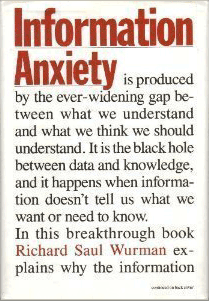Experiences: User Experiences
UXmatters has published 25 articles on the topic User Experiences.
Top 3 Trending Articles on User Experiences
-
The User Experience of Onboarding
January 22, 2024No CommentsFor an experienced professional who, like me, transitioned from marketing to User Experience, user onboarding is one of the most crucial aspects of both Customer Experience (CX) and User Experience. A well-designed user-onboarding process helps users understand a product’s value proposition, learn how to use it effectively, and achieve their desired outcomes quickly and easily. This leads to a positive customer experience because users feel confident and successful in using the product. Plus, a good onboarding process can help to improve a product’s user experience by identifying and addressing any painpoints or usability issues that people may experience.
Therefore, it’s strange to see how onboarding remains an afterthought for most product or UX teams. Working on the HSBC’s world-class account-opening team, focusing on onboarding, opened up new horizons for my thinking about crafting compelling user onboarding experiences and what this means for product teams, customers, and users. I had not previously thought that an onboarding experience could provide a strategic lever for the success of a digital product and play a key role in customer adoption as well as retention. Read More
-
Book Review: Information Anxiety
March 18, 2019 One thing we can count on is that the quantity of information is increasing over time. The prevalence of information, its relationship to knowledge, and its impact on people’s decision-making faculties is becoming a more central concern for UX professionals.
One thing we can count on is that the quantity of information is increasing over time. The prevalence of information, its relationship to knowledge, and its impact on people’s decision-making faculties is becoming a more central concern for UX professionals.Richard Saul Wurman, the author of Information Anxiety, is a trained architect, a very prolific writer, the founder of the TED conference, and a well-known public speaker. Although he wrote this book 30 years ago, the ideas it presents are just as relevant today as they were then, perhaps more so. It’s a credit to the solidity of his thinking that many of his concepts seem to predict the world in which we live today. Read More
-
A Good User Experience for the Legal Industry
February 7, 2022The innovations that have occurred during the COVID-19 pandemic have emphasized the importance of the user experience. Businesses in a variety of industries have had to shift to remote work overnight, and in many cases, their old technologies simply haven’t been able to make the jump. In fact, the demand for easy-to-use tools and software that are capable of facilitating effective online collaboration has increased significantly. The digital workspace Mural, for instance, experienced 1,000% growth over the course of 2020.
Despite the legal industry’s being a slow-to-change space, it is experiencing the same demand for innovation. Even before the pandemic, spending on legal-technology investments in 2019 was about $1.1 billion. Innovation in the legal industry is necessary for ediscovery, better legal-practice management, quicker decision-making, and improving the likelihood of positive legal-case outcomes. Contactless touchpoints and the shift to remote legal work has only accelerated UX trends in the industry. Read More
Columns on User Experiences
-
Smartware
The evolution of computing
A column by Dirk Knemeyer and Jonathan Follett
All Articles on User Experiences
- A Framework for Choosing Types of Onboarding Experiences
- The User Experience of Onboarding
- The Evolution of the User Experience: From Web to Wearables
- UX Design in VPN Development: Balancing Security and the User Experience
- Enhancing User Engagement Through Interactive, Virtual Real-Estate Tours
- Impacts the User Experience Has on the Customer Experience
- Superior User Experience Can Democratize SaaS-Based Ad Tech
- A Good User Experience for the Legal Industry
- How Contactless Technology Is Transforming the Consumer Experience
- What Is a Good User Experience?
- Book Review: Make Your Customers Dance
- Is Your User Experience Saving the World?
- Artificial Intelligence Is Shifting Our Perception of Great User Experiences
- Book Review: Information Anxiety
- The User Interface Vanishes: How Smartware Will Change the User Experience
- How Science Will Shape Smartware
- Satisfying Fundamental Human Needs
- Connectedness: Virtual and Local
- The Future of Embedded Advertising
- Smartware, AI, and Magical Products
- The Smartware Transformation
- Smartware: The Evolution of Computing
- The Web and Cuban Technology Limitations
- Helping Users to Absorb Change: Four Steps Designers Can Take
- User Experience Is a Feeling
New on UXmatters
- Linking Customer Experience to Business Results for Sustainable Growth
- Using AI to Design Better Mobile-App User Experiences
- Leveraging the Psychology of Color in UX Design for Health and Wellness Apps
- Elevating the User Experience and Fostering Loyalty: Accessible Design for Travel-Booking User Interfaces
- Using Data Analytics to Optimize the In-Store and Online Retail Experience